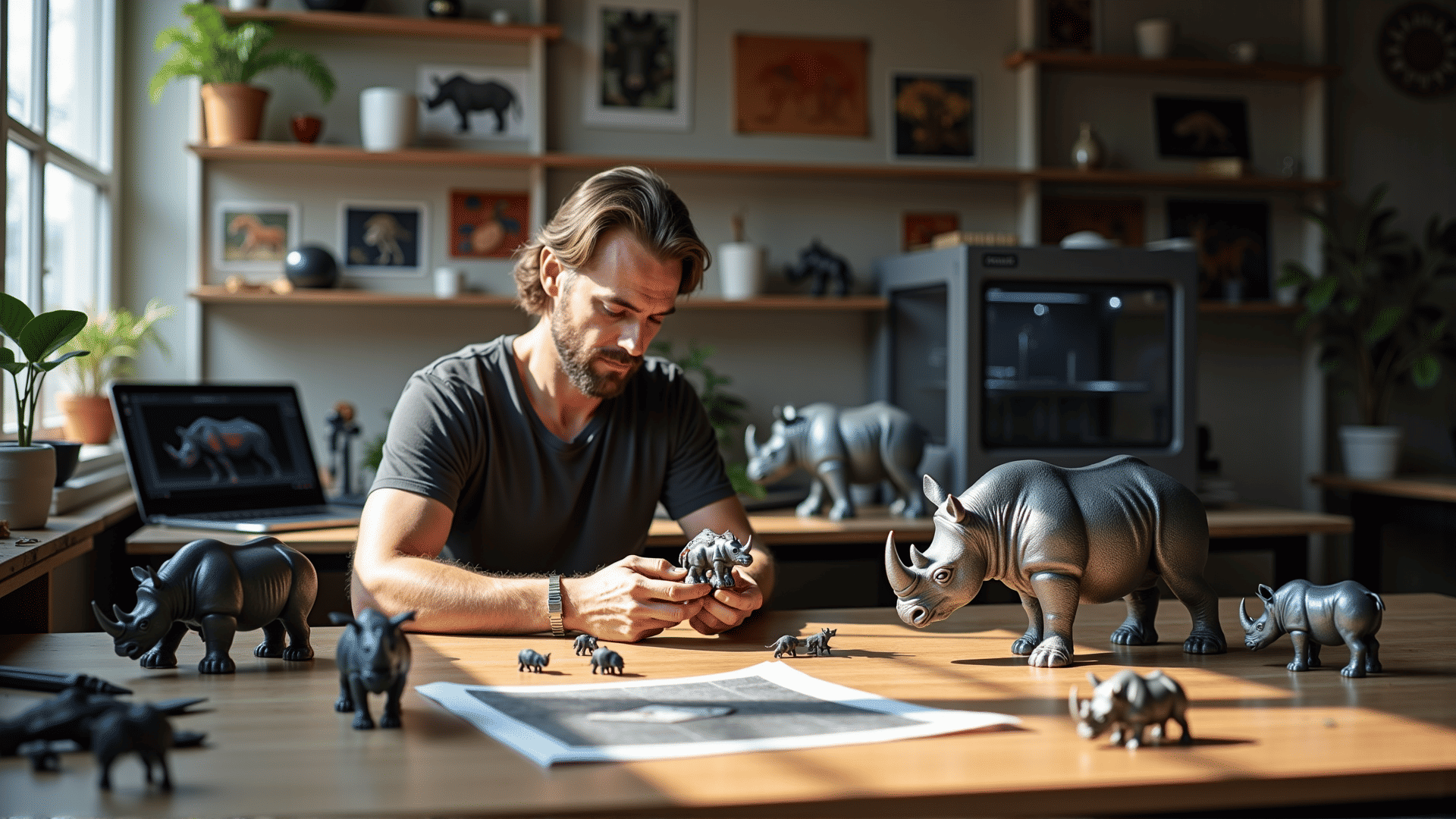In recent years, the emergence of 3D printing technology has revolutionized the creative landscape, opening new vistas for artistic expression. One area that stands out as both captivating and innovative is the creation of 3D Rhino models. These models, inspired by the magnificent and symbolic rhinoceros, exemplify how technology can merge with artistry to redefine traditional art forms and explore new dimensions of human imagination.
The combination of 3D printing with artistic design has allowed for an unprecedented level of precision and detail, offering artists a new medium to convey their vision. Unlike traditional sculpting where each piece is manually carved, artists can use digital tools to create intricate 3D models with complex geometries and textures that were previously unimaginable. Through software like Rhino 3D—aptly linked by name to the subject of many of these models—artists can manipulate digital designs to their exact specifications before bringing them to life in the physical world.
One of the most compelling aspects of 3D Rhino models is how they challenge the traditional boundaries of sculpture. Artists have long been constrained by the limitations of physical materials like stone, metal, and clay. However, 3D printing introduces a variety of new materials—such as resins and composites—that can emulate the characteristics of these traditional media while allowing for more versatile and complex structural designs. This new medium offers a more sustainable and efficient approach, minimizing waste by using only the necessary amount of material during printing.
Furthermore, 3D printing technology empowers artists to experiment with scale in ways that traditional methods could not afford. Giant rhinoceros sculptures, once limited by logistical challenges, can now be fabricated using segmented printing techniques that allow for the creation of monumental yet lightweight pieces. Conversely, intricate miniatures with delicate details can be accurately produced to scale, offering collectors and enthusiasts new ways to engage with the art.
The freedom that 3D printing affords does not only facilitate form and scale exploration; it also sparks a deeper dialogue about the symbolic resonance of the rhinoceros. This creature, often associated with strength and resilience, becomes a canvas for artists to convey messages about environmental conservation, cultural heritage, and the fragility of existence. By merging traditional artistic themes with cutting-edge technology, artists can create Rhino models that signify not just an aesthetic admiration but also a profound commentary on contemporary issues.
Another significant aspect is the accessibility that 3D printing provides to both artists and audiences. Aspiring artists, who might lack access to traditional sculpting facilities, can now design and distribute their work globally via digital platforms. The democratization of artistic creation allows voices from diverse backgrounds to contribute to the global art dialogue, enriching it with multiple perspectives.
Audiences, too, benefit from 3D technology, as they have the opportunity to engage with art uniquely. Interactive exhibitions enable onlookers to manipulate digital designs or participate in the creation process by selecting material options or customizing elements of the art before it is printed. This interactivity nurtures a more personal connection between the viewer and the artwork, transforming passive spectators into active collaborators in the artistic process.
The integration of 3D printing in the realm of artistic expression continues to evolve, heralding a future where the distinction between digital and traditional art forms becomes increasingly blurred. 3D Rhino models stand as a testament to this evolution, showcasing how technology can honor past traditions while paving the way toward new creative frontiers. In the intersection of art and technology, we find an ever-expanding canvas of possibilities that invites us to rethink what art can be and the multitude of ways it can touch our lives.
